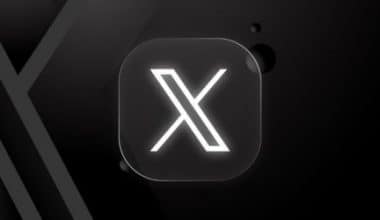Have you ever tried to open a YouTube channel or maybe even thought about making your YouTube channel successful, only to feel overwhelmed by all the steps and challenges involved? I’ve been there, too. The idea of starting a YouTube channel seems simple, but as I quickly realized, there are so many moving parts—setting up the channel, understanding what draws viewers in, and figuring out how to monetize all that hard work. I failed a few times before I finally discovered the right path.
In this article, I’m going to walk you through a step-by-step guide on how to open a successful YouTube channel, how to monetize your channel, and the seven best tools you can use as a YouTuber to boost your success.
Key Points
- Create and set up your YouTube channel properly, starting with an optimized name and description.
- Monetization: Understand the key metrics—1,000 subscribers and 4,000 watch hours—to start earning through ads.
- Use essential tools like editing software and analytics platforms to improve your content and channel performance.
- Focus on consistent viewer engagement through quality content and regular interaction with your community.
What Is a YouTube Channel?
A YouTube channel is essentially the hub of your activity on YouTube, serving as your personal or business profile page. Once you create a YouTube account, a personal channel is automatically created for you. This channel is where all your publicly uploaded videos, playlists, and other content are stored, and it is customizable to reflect your style and brand.
For personal users, this means you can modify the channel’s appearance by adjusting its background, layout, and color scheme. You can also control what information appears, such as a personal description, your uploaded videos, and any playlists you want to feature. This allows you to present your content in a way that aligns with your creative vision.
Businesses can also create channels through a brand account. A business channel can be managed by multiple people, which is useful for teams working together to manage a brand’s online presence. Whether personal or business-related, your YouTube channel is the foundation of your identity on the platform, allowing you to organize and present your content to viewers in a way that suits your goals.
How to create a successful YouTube channel

The following are the steps I took to create a successful YouTube channel:
#1. Define Your Target Audience
When I started my own YouTube channel, one of the first mistakes I made was assuming that my videos could appeal to everyone. That was a big learning moment. I realized that I had to narrow down exactly who I was speaking to in my videos. It’s like this—you wouldn’t try to sell baby toys to teenagers, right? The same concept applies here. Your audience isn’t just “people”; it’s a specific group of people who have particular interests, problems, or needs.
Start by asking yourself: Who is my content going to help? It could be anything—students who need study tips, parents looking for easy dinner recipes, or even travelers who want to see the world on a budget. Once you figure out who you’re making videos for, it becomes way easier to connect with them because your content will speak directly to their lives.
#2. Choose a Niche
One of the hardest parts of starting a YouTube channel is picking your niche. You don’t want to go too broad, but you also want to choose something with room for growth. When I first started, I thought being more general would get me more views—big mistake! The truth is that YouTube has millions of creators, and if your content is too broad, it gets lost in the noise. On the other hand, if you focus too narrowly, you might struggle to find an audience.
A good rule of thumb is to pick something you love, something that excites you. Ask yourself: What’s a topic I could talk about for hours? You’re going to spend a lot of time making videos, so make sure it’s something you’re passionate about.
For example, maybe you love travelling, but instead of covering everything, you could focus on a niche like “solo travel for women” or “travelling with kids on a budget.” That way, your content appeals to a specific group that feels personally connected to your videos.
#3. Create a Content Calendar
A content calendar can be your best friend as a creator. When I first started, I posted videos whenever I felt like it, and my growth was so slow. What changed everything for me was getting consistent. I’m not talking about uploading a ton of videos all at once but setting a realistic schedule that you can stick to over the long haul.
Think of it this way—people love routine. If they know you post every Monday or every other Thursday, they’ll start to anticipate your videos. It’s like waiting for your favourite TV show every week.
Whether you’re posting how-to tutorials, vlogs, or product reviews, having a calendar keeps you organized and reduces the stress of figuring out “what’s next.”
#4. Optimize Titles, Tags, and Descriptions
Now, this is where I messed up early on. I had great content, but I wasn’t getting many views. That’s when I realized I wasn’t optimizing my videos for YouTube’s search algorithm. Let’s be real—YouTube is a search engine. You can have the best video in the world, but if no one can find it, what’s the point?
Here’s what I did to fix it: I made sure to use relevant keywords in my titles, tags, and descriptions. Let’s say you’re making a video about “easy vegan recipes.” Instead of just calling it “Cooking Time,” try something like “Easy Vegan Recipes for Beginners: Quick & Healthy Meal Ideas.” It’s specific and includes words people are actually searching for.
#5. Promote Your Videos
I used to think that once I uploaded my video, I could just sit back and let the views roll in—wrong! Getting eyes on your content takes effort. You have to promote your videos on other platforms. I made the mistake of only relying on YouTube’s algorithm to push my content, but the truth is, if you want people to watch, you need to tell them about it.
Share your videos on Instagram, Facebook, Twitter, or whatever platforms your target audience uses. If you’ve got a website or blog, embed your videos there too. Another thing that helped me was collaborating with other creators.
When you work with others in your niche, you get access to their audience, and it’s a win-win for both of you.
#6. Engage with Your Audience
One of the best ways to build a loyal following is by engaging with your audience. When I started responding to comments, my viewers noticed and appreciated it. People like feeling heard, and when you take the time to reply, it shows that you value them. Ask for feedback, too—what kind of videos do they want to see? Their input can give you fresh ideas and help you create content they’ll love.
Also, don’t be afraid to ask for subscriptions. At the end of every video, remind people to hit that subscribe button and turn on notifications. It seems obvious, but sometimes people need that little nudge.
#7. Invest in Quality Equipment (When You’re Ready)
Here’s the truth: you don’t need fancy gear to start. I filmed my first videos on my phone with no special lighting or microphone, and I still got views. Over time, though, I upgraded as my channel grew. If you’re just starting out, focus on content quality first—good lighting (even if it’s just from a window) and clear audio go a long way.
When you’re ready, consider getting a decent microphone and some basic lighting gear like a ring light. These little improvements can make your videos look and sound more professional without breaking the bank.
The bottom line is that building a successful YouTube channel takes time and patience. It’s not going to happen overnight, but if you stay consistent, engage with your audience, and keep improving, you’ll get there. The key is to enjoy the process and create content you’re passionate about. That passion will shine through, and people will notice.
How to Monetize Your YouTube Channel
To monetize your YouTube channel, follow these key steps based on important criteria and specific guidelines to ensure you’re fully equipped for success:
#1. Meeting Subscriber Count and Watch Hours
Monetization starts with building a strong community and viewership. Two key metrics are:
- Subscriber Count (1,000 subscribers): You must have at least 1,000 subscribers. This proves that your channel has a dedicated audience interested in your content, and subscribers play a major role in boosting engagement and reach.
- Watch Hours (4,000 watch hours): You need 4,000 public watch hours accumulated within the past 12 months. This metric ensures that your content is engaging enough to keep viewers on your channel. The more people watch your videos, the closer you get to being eligible for monetization.
#2. Creating an AdSense Account
To monetize your content, you need to set up an AdSense account. AdSense is Google’s platform that enables ads on YouTube, helping creators earn revenue from the ads displayed during their videos. Linking your YouTube channel to an AdSense account allows you to start earning money once you meet all eligibility requirements.
#3. Join the YouTube Partner Program (YPP)
Becoming a part of the YouTube Partner Program (YPP) is essential for monetization. It gives you access to features like channel memberships, the merchandise shelf, and Super Chats. To be accepted into YPP, you need to meet these conditions:
- Have at least 1,000 subscribers.
- Achieve 4,000 public watch hours in the last 12 months.
- Comply with all YouTube monetization policies and community guidelines.
- Have no community guidelines strikes on your channel.
- Enable two-step verification on your associated Google account for extra security.
- Be located in a region where the YPP is available.
Once approved, you’ll be able to make money through ads, channel memberships, Super Chats, and more.
#4. Enable Monetization on YouTube
Once your channel is accepted into YPP, you can enable monetization in YouTube Studio. This will activate various ways to monetize your content, including ad revenue, memberships, and other features.
#5. Avoid Content Pitfalls That Could Hurt Monetization
Certain behaviors can harm your chances of monetizing successfully. Avoid these practices:
- Controversial or misleading content: Avoid creating controversy or using inflammatory, false language just to stir attention.
- Excessive profanity: While a little bad language is allowed, avoid using excessive obscenities, as it could get flagged.
- Misleading thumbnails: Ensure your video’s thumbnail accurately represents its content. Misleading images could result in penalties.
- Shocking content: Avoid unnecessary or gratuitous shock value, which may deter advertisers from associating with your channel.
YouTube Monetization Requirements Checklist.PDF
Five Best Tools for Managing and Growing a YouTube Channel
Here are five of the best tools for managing and growing a YouTube channel:
#1. TubeBuddy
TubeBuddy is a top-rated YouTube management and SEO tool designed to help YouTubers optimize their content for better visibility and engagement. Its features include:
- SEO and Keyword Research: TubeBuddy’s Keyword Explorer and SEO Studio tools allow users to discover the best keywords for titles, descriptions, and tags, boosting search rankings.
- A/B Testing: Creators can use A/B testing for thumbnails and titles, experimenting with different designs to see what attracts the most clicks and engagement.
- Best Time to Publish: This feature analyzes your audience’s behavior and recommends the optimal times to post videos to maximize visibility and interaction.
- Search Rank Tracking: TubeBuddy lets you track the performance of your videos on YouTube and Google search engines, allowing you to refine your SEO strategy.
#2. Social Champ
Social Champ is a versatile social media management tool that centralizes all your social media platforms, including YouTube, into one dashboard. Its features include:
- Social Media Publishing: Users can schedule YouTube videos and manage uploads through a unified interface, making content management easier.
- Performance Tracking: It offers robust analytics, enabling users to track engagement metrics across platforms and generate detailed reports.
- Content Queuing: Social Champ’s queuing feature ensures a consistent posting schedule without manual intervention.
#3. Canva
Canva is a user-friendly design platform, perfect for YouTubers who need custom graphics and visuals for their channels. Its features include:
- Templates: With over 400,000 customizable templates, Canva is great for creating YouTube thumbnails, channel banners, and more.
- Video Background Remover: This powerful tool enables creators to remove video backgrounds with ease, helping to create more polished and professional-looking content.
- Collaborative Features: Canva’s real-time collaboration makes it easier for teams to work together on designs.
#4. Cyfe
Cyfe is an all-in-one dashboard that allows YouTube creators to monitor key performance metrics.
- Custom Dashboards: Cyfe offers customizable dashboards that track important YouTube KPIs, such as views, average watch time, and subscriber growth.
- Alerts and Notifications: Users can configure real-time alerts for critical metrics, keeping them informed about their YouTube performance at all times.
#5. VidIQ
VidIQ is a powerful YouTube SEO and analytics tool that helps creators grow their channels through insights and optimization strategies. Its features include:
- • Video Optimization: VidIQ offers features like keyword suggestions, tags, and competitor analysis to help videos rank higher.
- • Channel Audits: The tool provides detailed channel audits, offering recommendations on how to improve overall performance and reach.
How Many Views Do You Need to Make $1000 (1,620,110 naira) on YouTube?
Let’s cut to the chase: On average, you’ll need about 280,000 to 560,000 views per week to earn $1000 (1,620,110 naira) from YouTube ad revenue alone. But hold up, there’s more to this story than just views
How Do I Withdraw Money From YouTube?
The options available may include Electronic Funds Transfer (EFT), wire transfer, or check. Learn how to set up your form of payment. If you have separate payment accounts for AdSense and AdSense for YouTube, you’ll need to select a form of payment for each account when it reaches the threshold.
Does YouTube Pay for Shorts?
YouTube will pay 45% of the net revenue from YouTube Premium that is allocated to monetizing creators for Shorts. A portion of YouTube Premium revenues is allocated to help cover the costs of music licensing.
Conclusion
Starting and growing a YouTube channel isn’t easy, but it’s incredibly rewarding. There will be times when you’re frustrated and feel like giving up, but if you stay consistent and passionate about what you’re doing, you’ll see progress. Whether you’re defining your target audience, learning to optimize for SEO, or investing in better equipment down the line, each step is a building block for long-term success.
The most important advice I can give you is to enjoy the journey. When you love what you’re creating, it shows in your videos, and your audience will feel it too. Keep learning, stay engaged with your community, and always strive to improve. You’ve got this!
Related Articles
- How to Change Your YouTube Channel Name: Best Tips for Rebranding Your Channel
- 50+ YouTube Content Ideas to Boost Your Channel in 2024.
- How to Feature Channels on YouTube: A Step-by-Step Guide
- How to Use the YouTube Community Tab to Build Stronger Connection with Your Audience






